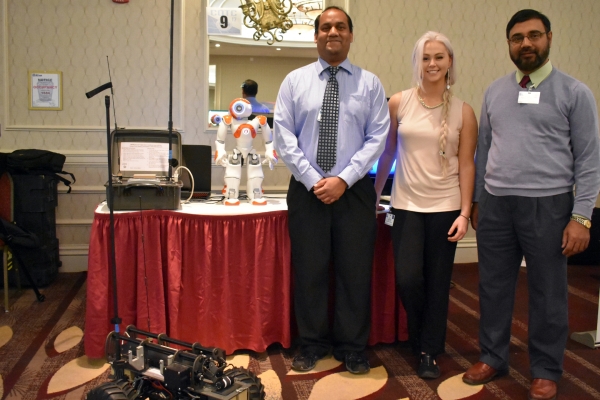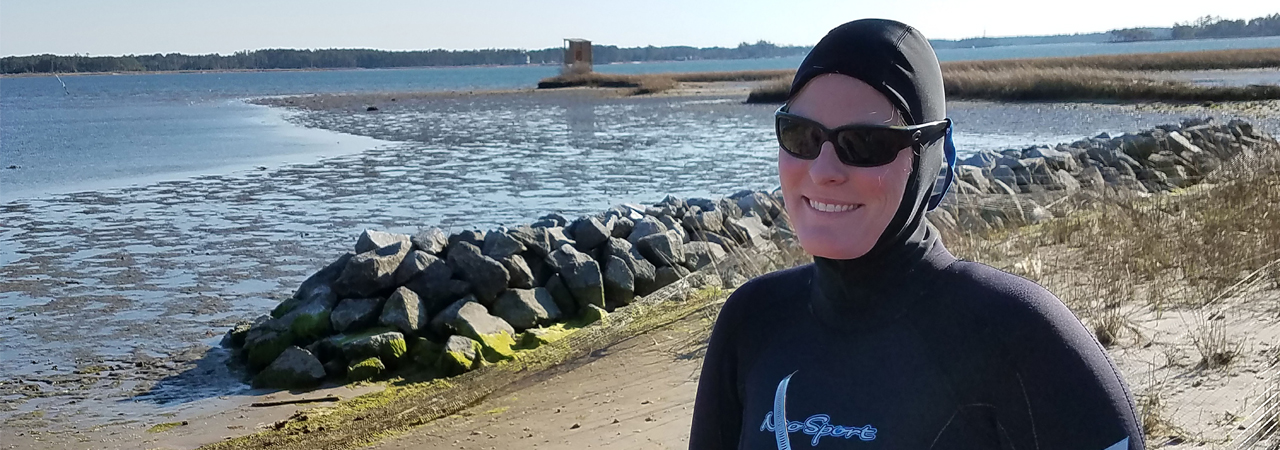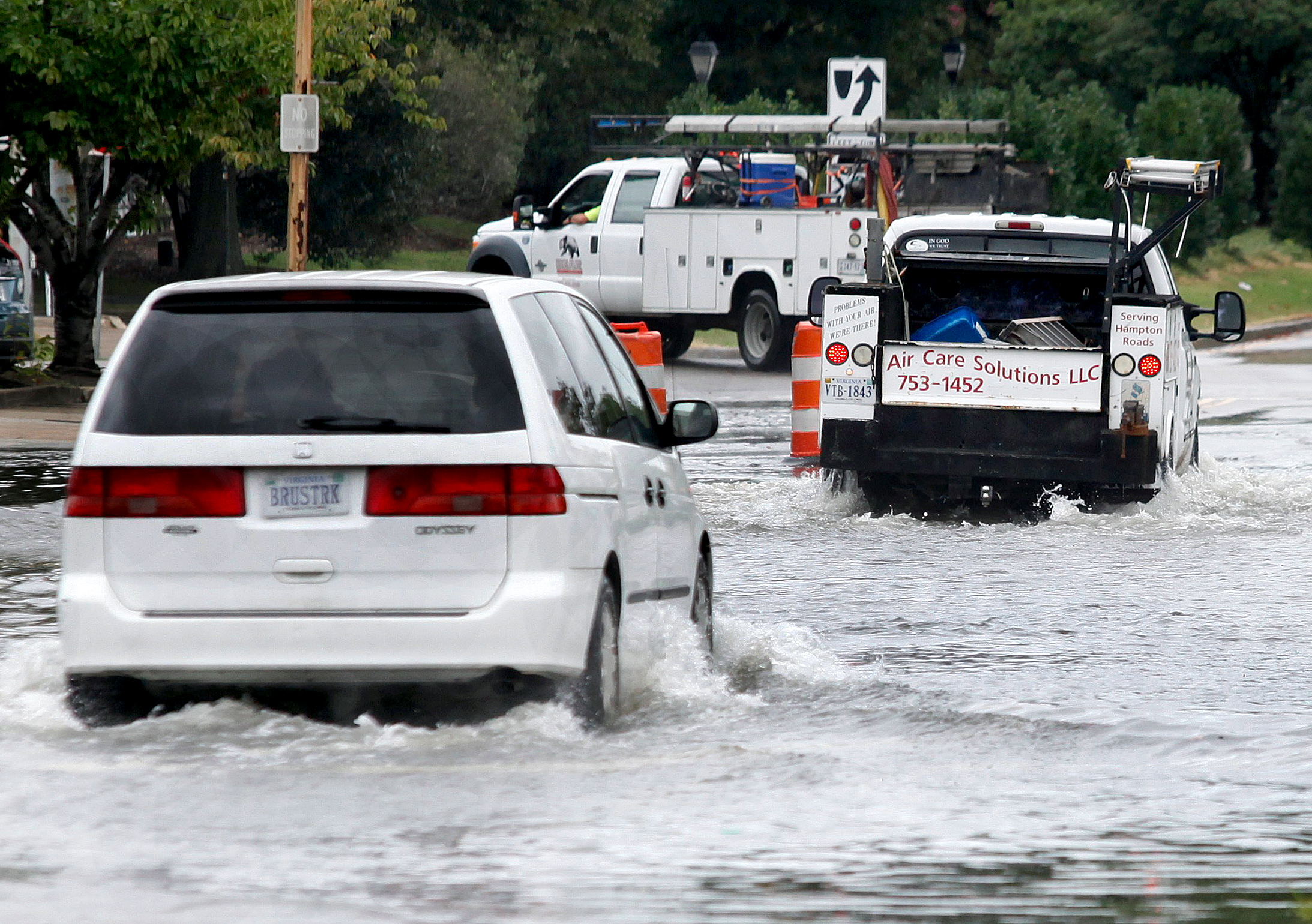ODU Students Teaching Robots to Walk and Talk Using Mind Control
 (L to R) Lasitha Vidyaratne, Caroline Kuzio and Khan Iftekharuddin
(L to R) Lasitha Vidyaratne, Caroline Kuzio and Khan Iftekharuddin
By Keith Pierce
The idea of having robots that can walk for someone who is disabled or talk for a person who has lost the ability to speak may seem cool and futuristic to some, but for a team of computer engineering students at Old Dominion University it's a reality - or very near to it.
The work is being done by electrical and computer engineering Ph.D. students in the University's Vision Lab and the range of potential uses - from warfighting and law enforcement to health care and self-driving cars - are so significant, the team's work captured the attention of NATO leaders at a recent conference.
"The way the technology works is that there is a screen in front of a patient which shows flashing lights over a series of commands," explained student Alex Glandon. "When a person wearing an electroencephalogram (EEG) cap concentrates on the command visually, without moving, we pick up brain waves that are correlated to the signal they're concentrating on, and this allows someone who can't move to control a robot."
Brain-computer interface (BCI), only one of several ongoing projects in the Vision lab, relies on brain signals that are interpreted by computers. Using an EEG cap to capture the brain's reaction to visual cues with luminous flash, the computer wirelessly transmits the signals to autonomous systems.
The systems the team uses are not new. They are automated systems, such as the multi-function agile remote-controlled robot (MARCbot), commonly used by the military for the inspection of suspicious objects, and NAO, a popular autonomous, programmable humanoid robot. Both have been on the market for several years.
However, BCI is an emerging technology that enables these devices to do anything from help a person who cannot speak to call 9-1-1, to entering a potential danger zone for a soldier, and helping an immobile individual with day-to-day tasks - all with thought commands.
"With this technology, if someone doesn't have the ability to speak on their own, they can think and the NAO robot can actually talk for them," said student Caroline Kuzio. "It's exciting to be working on something that has so many different applications that can be helpful to so many people."
The technology attracted the attention of high-ranking military leaders, representing more than 60 countries, at a recent NATO conference held in downtown Norfolk.
"NATO could actually see the use of both of these robots, MARCBot and NAO, in many different applications relevant to their needs," said Khan Iftekharuddin, associate dean for research in the University's Batten College of Engineering and Technology. "NATO has been engaging with us at ODU for quite some time, with other projects and through other faculty members. It offers our students a unique advantage to work on projects with immediate, real-world applications."
Iftekharuddin said the technology, which is designed to be an "extension of us," will soon be the new norm.
"As a university, we have to stay ahead of this technology," he said. "That's why we've been developing many different methods, algorithms and techniques to drive these robots to do different things, including facial recognition and responding to written commands."
Iftekharuddin, who routinely meets with colleagues and serves on several review panels, nationally and internationally to discuss emerging technology, speaks highly of the students in the vision lab.
"I can say with a great deal of confidence that the work we do here is cutting edge," he said. "The students in this lab are top-notch and could go anywhere they want, but they choose to be here, and for good reason."




